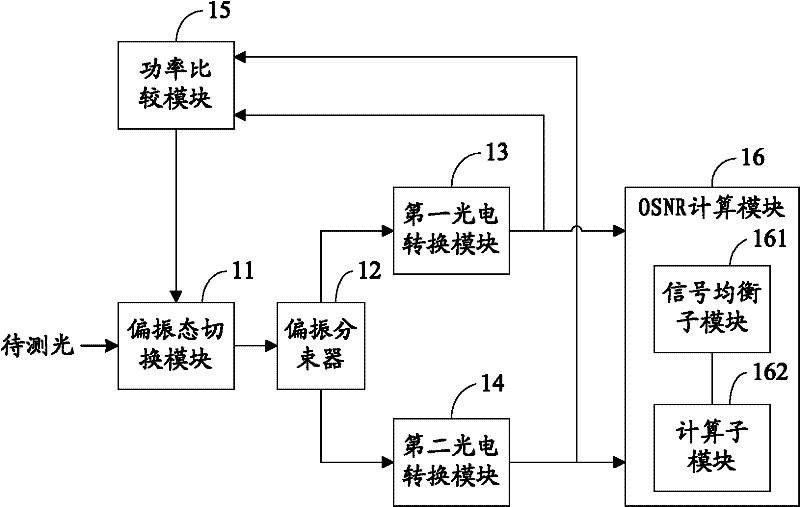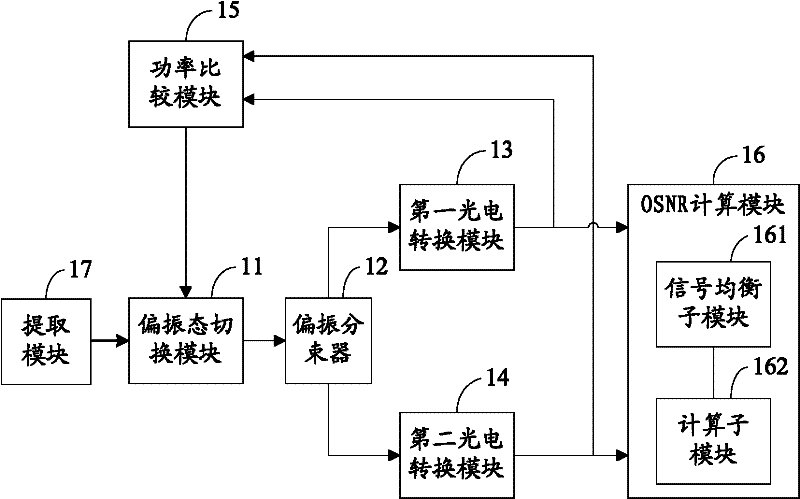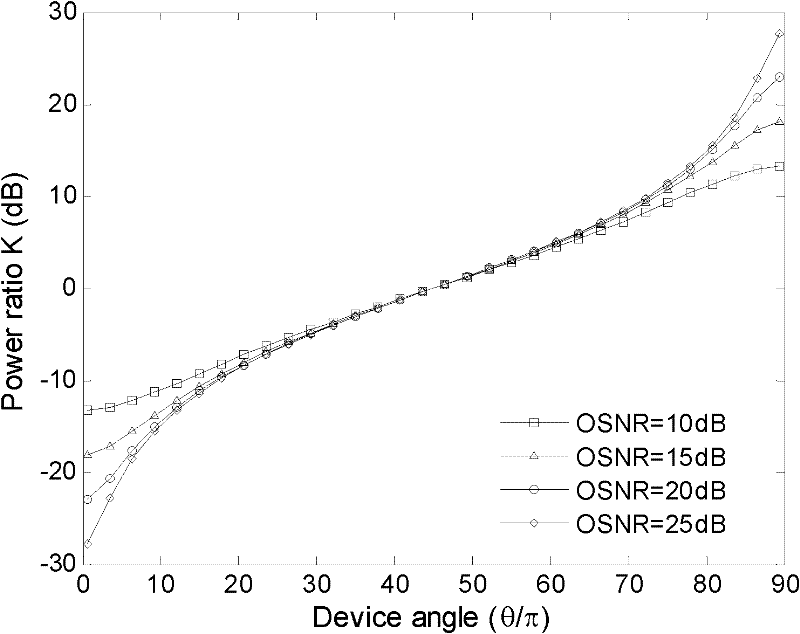Optical signal to noise ratio detection method and device
A signal-to-noise ratio and light detection technology, applied in the field of optical communication, can solve the problems of slow detection speed, high detection cost, long time-consuming OSNR, etc., and achieve the effect of improving speed and efficiency
- Summary
- Abstract
- Description
- Claims
- Application Information
AI Technical Summary
Problems solved by technology
Method used
Image
Examples
Embodiment Construction
[0027] The following will clearly and completely describe the technical solutions in the embodiments of the present invention with reference to the accompanying drawings in the embodiments of the present invention. Obviously, the described embodiments are only some, not all, embodiments of the present invention. Based on the embodiments of the present invention, all other embodiments obtained by persons of ordinary skill in the art without creative efforts fall within the protection scope of the present invention.
[0028] An embodiment of the present invention provides a device for detecting optical signal-to-noise ratio OSNR, the structure of which is as follows figure 1 As mentioned above, the device includes: a polarization switching module 11 , a polarization beam splitter 12 , a first photoelectric conversion module 13 , a second photoelectric conversion module 14 , a power comparison module 15 and an OSNR calculation module 16 .
[0029] The polarization state switching...
PUM
 Login to View More
Login to View More Abstract
Description
Claims
Application Information
 Login to View More
Login to View More - R&D
- Intellectual Property
- Life Sciences
- Materials
- Tech Scout
- Unparalleled Data Quality
- Higher Quality Content
- 60% Fewer Hallucinations
Browse by: Latest US Patents, China's latest patents, Technical Efficacy Thesaurus, Application Domain, Technology Topic, Popular Technical Reports.
© 2025 PatSnap. All rights reserved.Legal|Privacy policy|Modern Slavery Act Transparency Statement|Sitemap|About US| Contact US: help@patsnap.com



